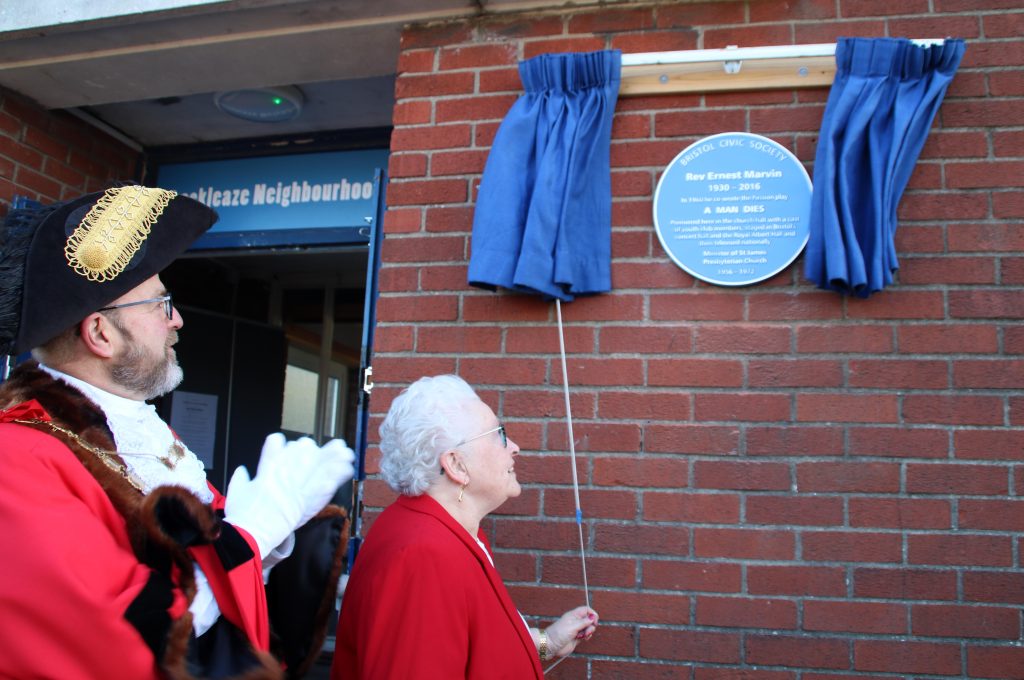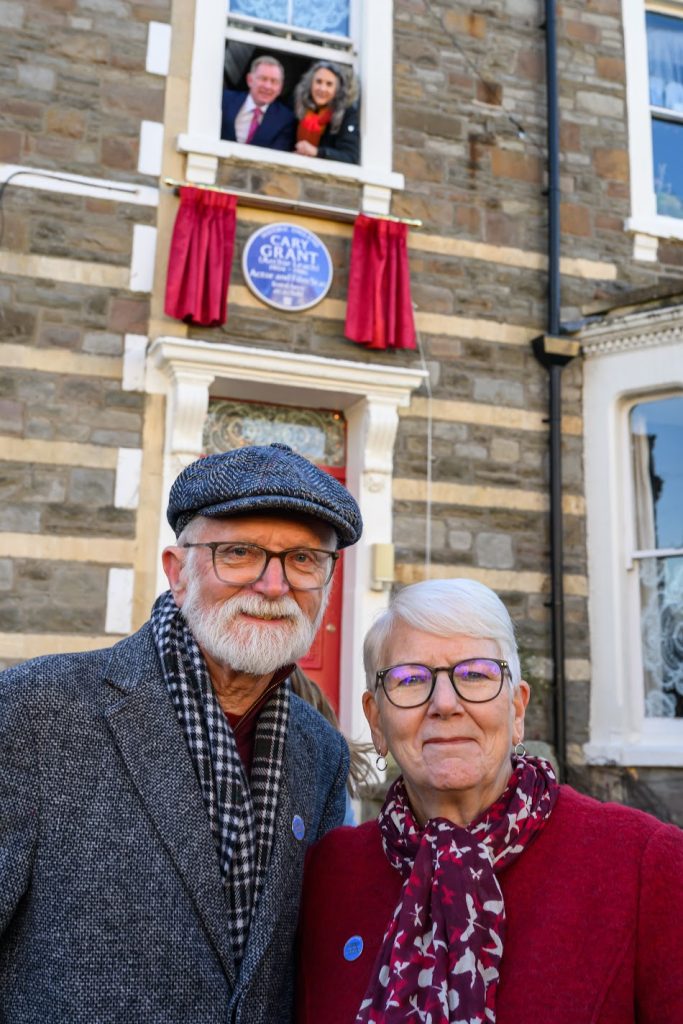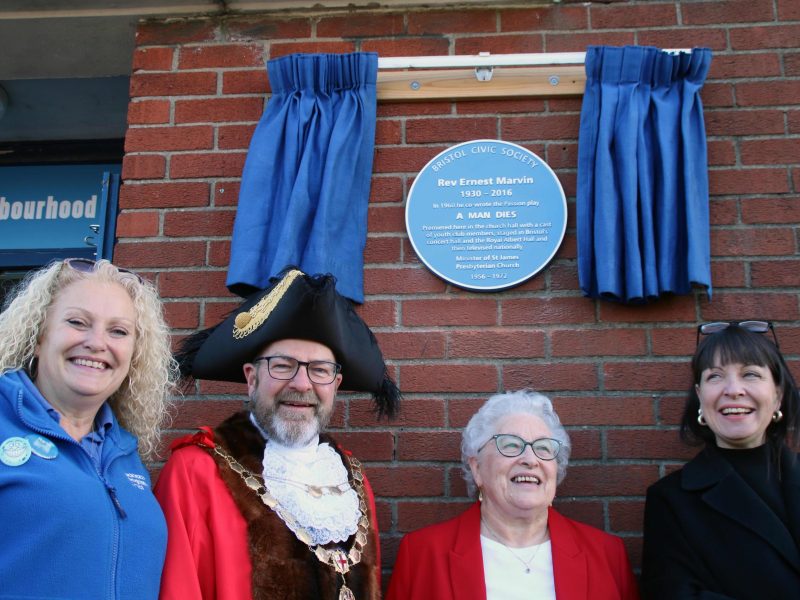TWO blue plaques marking people of cultural significance in north Bristol were unveiled on the same day.
The first was a plaque from Historic England for Hollywood icon Cary Grant at his childhood home in Bishopston. The event was attended by Arts Minister Sir Chris Bryant and pupils from the actor’s school, Bishop Road.
The second, but a first for Lockleaze, was a plaque from Bristol Civic Society honouring Reverend Ernest Marvin, who created a successful musical with young people from the estate in the 1960s.
Gordon Young, of the Civic Society, said: “It was plain to see that Rev Marvin is remembered with great respect and affection. We’ve facilitated 42 plaques since 2015 and this one in Lockleaze was one of the most significant in terms of engaging with the local community.”
The Civic Society worked with Melissa Blackburn and Maria Perrett, Community Activator at the Lockleaze Neighbourhood Trust.
It was 60 years ago today, Rev Marvin wrote a Passion play …
CARY Grant might be the better known name but a blue plaque unveiled on the same day as the Hollywood actor’s is just as important to one Bristol community.
Reverend Ernest Marvin, who is commemorated at St James Church, Romney Ave in Lockleaze, was an inspirational and innovative minister and has been honoured with a Bristol Civic Society blue plaque.
In 1956, he was just 26 years old when he was ordained, and Lockleaze was a new, growing suburb in a very different time – a pre-Beatles, Teddy-boy era.

The minister formed a church youth club, popular with teenagers. He stipulated that they had to attend Sunday service to join the club. In 1959, Rev Marvin collaborated with Ewan Hooper, a Bristol Old Vic actor, to devise a gospel play in a form that young people could directly relate to.
A Man Dies was the first Christian Passion musical and, arguably, the first rock musical. It was first performed in the church and then went on to achieve spectacular success. In the early sixties, it ran for four years at the Colston Hall, playing to full houses for five nights on each occasion. In 1964, it made the capital, not only filling the 5,000-seat Royal Albert Hall but also having a soundtrack album laid down at Abbey Road Studios. It was also shown on national television three times in as many years.
More than 70 residents gathered for the unveiling by Christine Welch, who had appeared in the original performances.
Home where young Cary was happiest
Archibald Alexander Leach, born in Horfield in 1904, and his parents Elias and Elsie moved to 50 Berkeley Road, Bishopston, in 1906 and lived there until 1909 or 1910.
The family lived at six different addresses in Bristol during Archie’s childhood but he has fond memories of this place, where he lived when he started at Bishop Road School. According to the Ladies Home Journal in 1963, Archie, who went on to become Hollywood star Cary Grant, recalled his years there as “the happiest days for the three of us”.
With his signature tan, suave and sophisticated style, Grant was the consummate leading man who came to symbolise the authentic American hero. But despite his fame, he never forgot his roots in Bristol. He visited regularly, returning to see his mother, and happily posed for publicity photos in his native city. Such is Grant’s fame that his celebrated publicity photo in front of the Clifton Suspension Bridge continues to be recreated for selfies by visitors to the city.
In 2014 a new biennial festival – Cary Comes Home – was set up to celebrate his achievements with a season of film screenings, talks, walking tours and much more.

The blue plaque installed at 50 Berkeley Road late last year, shines a light on Grant’s “rags to riches” story.
It was unveiled by Arts Minister Sir Chris Bryant and Dr Charlotte Crofts, director of Cary Comes Home.
Grant’s widow Barbara Jaynes said, “Cary often spoke fondly of his childhood in Bristol, He cherished the memories of his early years, and I can only imagine the joy he would have felt knowing that his roots would be commemorated in such a meaningful way. This plaque is a beautiful tribute to his humble beginnings and the extraordinary path he forged in Hollywood and beyond.”


